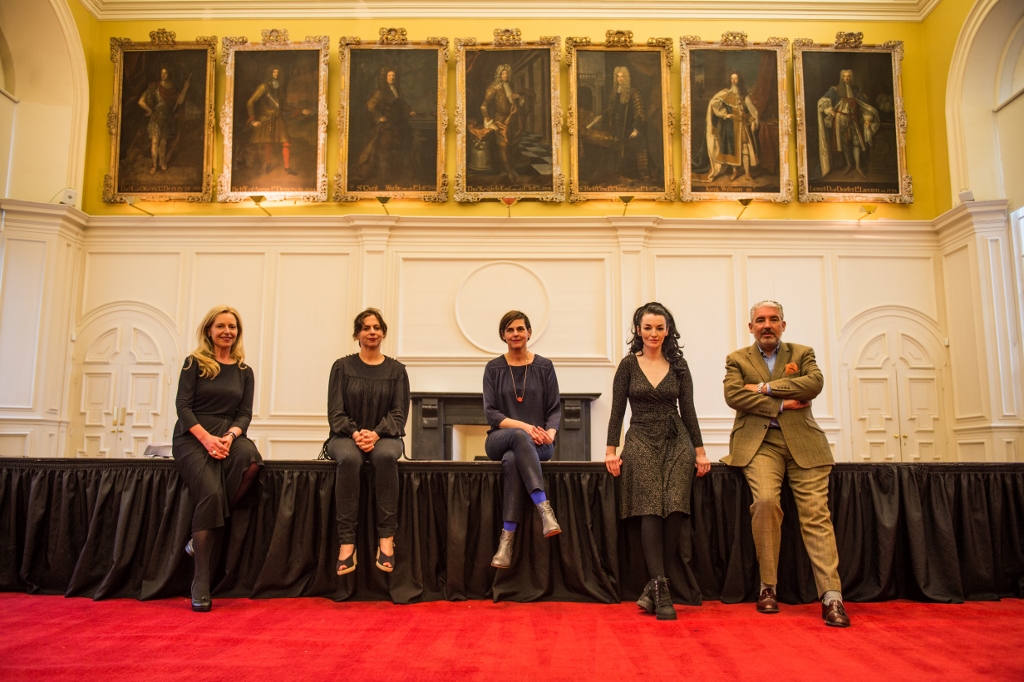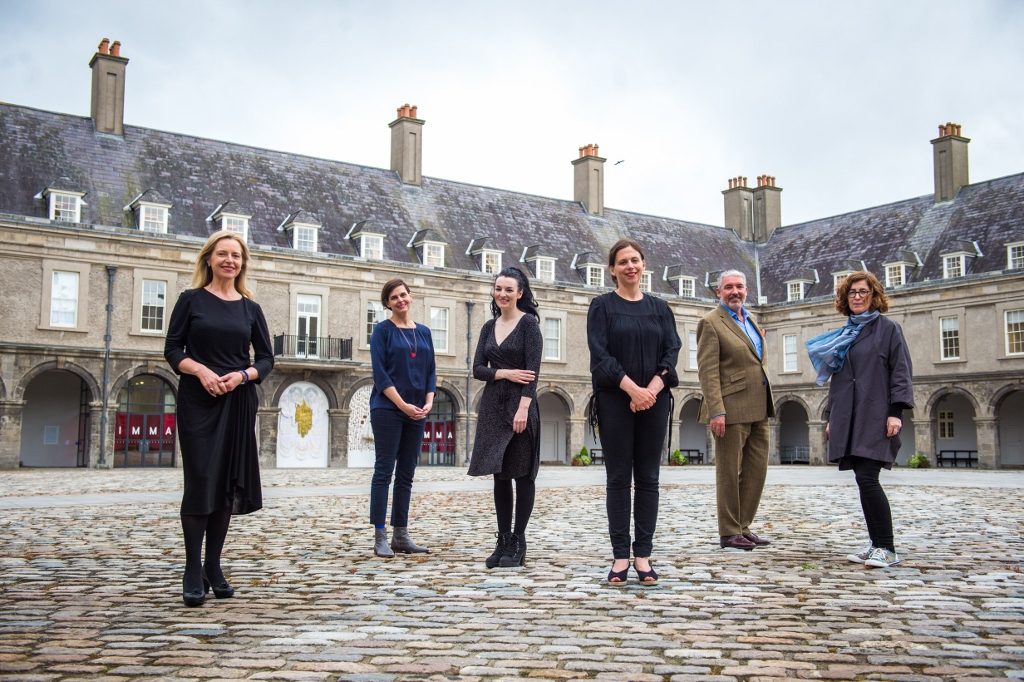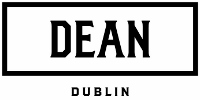Curated by Linder and Maxwell Sterling with performances from Fatima Al Qadiri, WIFE, Greg Wilson and Conor Thomas among others. Tickets go on sale on Friday 26 May 2017 at 10am.
IMMA are delighted to announce details of ‘Sunset Birth’, the 2017 IMMA Summer Party taking place on Saturday 15 July. Sponsored by O’Hara’s Craft Beer it is curated by the artist Linder and the musician Maxwell Sterling. Responding to the current IMMA exhibition As Above, So Below: Portals, Visions, Spirits & Mystics, the curators have invited musicians and performers whose practice reflects and responds to themes of spirituality and mysticism via music, performance and ritual.
In advance of tickets going on sale later this week IMMA is delighted to announce programme highlights which include Kuwaiti musician and visual artist Fatima Al Qadiri in her first Irish appearance, legendary Hacienda (Manchester) DJ Greg Wilson, Boomkat DJ Conor Thomas, Berlin based WIFE and additional performances from Marcin Pietruszewski & Tristan Clutterbuck duo, Lauren Fitzpatrick, Teresa Winter, CROWW, Sam Kidel and Rian Treanor.
Started in 2014, IMMA’s Summer Party has become a landmark in the cultural calendar as a celebration of art, music, live performance, food and drink. This year IMMA will create two parties in one, with distinct before and after dark programmes happening on the same night. In the early part of the evening exhibitions will be open in the Main Galleries, food and drink will be on offer on the Terrace and the Gardens will be alive with talks, films, music and art interventions. After dark the party will move indoors with immersive live performances in IMMA’s stunning stained glass Chapel and ornate Great Hall. The night will respond to our landmark International exhibition As Above, So Below: Portals, Visions, Spirits & Mystics, and indeed the party title -‘Sunset Birth’ – takes its name from a painting by the British Surrealist artist Ithell Colquhoun, whose work is currently on view as part of this exhibition.
There will be DJ sets, live performances, dance and live film scores across the night, channelling emotions through different forms and sonic styles ranging from intimate recitals of vocal work through to more intense and highly energised performances. Several of the musicians performing are affiliated with the record label, The Death Of Rave which was set up by Conor Thomas in 2012. The label is home to a wide variety of music, from Mark Leckey’s soundtrack to ‘Fiourucci Made me Hardcore’, to the work of Sam Kidel, Wold and The Automatics Group. Whilst the label covers a large span of musical genres, there is an overarching connectivity between the artists, rooted in their prescient sound, style and environmental engagement.
Curators Linder and Maxwell have previously collaborated on various film and performances, most recently, Children of the Mantic Stain ballet for British Art Show 8 at the Royal Festival Hall 2016, plus Maxwell composed the five hour score for Linder’s Destination Moon. You must not look at her! performance at last year’s inaugural Art Night hosted by the ICA, London.
As always, delicious food and drinks will be available to purchase all evening and the grounds and galleries of IMMA will be open to art and culture lovers during the night. We are delighted to partner with O’Hara’s this year who will be providing full bars stocked with a range of drinks including, of course, delicious O’Hara’s Craft beers and ciders.
A highlight of the summer calendar the IMMA Summer Party has sold out every year so we encourage you to buy those tickets early! Tickets go on sale to the general public on Friday 26 May at 10am, priced €18 and are available through www.imma.ie A limited pre-sale is available to IMMA Members from Wednesday 24 May.
The Summer Party is part of a Summer Nights Programme at IMMA this July and August including a free live art performance night ‘Wilder Beings Command!’ on Saturday 29 July which is suitable for all ages, and a live performance by artist Eoghan Ryan on 17 August 2017. Details for both events will be available in June.
-ENDS-
For more information and images please contact [email protected] / 01 612 9920 or [email protected]
Additional Information for Editors
Linder is a widely celebrated artist whose work brings together languages of graphic design, popular culture, high fashion and fine art in the production of photomontage, performance and installation. She has had solo exhibitions and retrospectives at major institutions at Tate St Ives, Hepworth Wakefield and Musée d’Art Moderne de la Ville Paris. Linder questions roles of gender identity and commodification in society, her feminist imagery has received world-wide recognition. Her photomontages are included in As Above, So Below: Portals, Visions, Spirits & Mystics and Linder also exhibited at IMMA’s Primal Architecture 2014.
Read more about Linder in i-D / The Quietus / Tate Shots /Interview Magazine
Maxwell Sterling: Fascinated by the territory where cinematic and spiritual music meets dystopian sound design, Maxwell Sterling explores the boundaries of acoustic and synthetic instrumentation. His debut album, ‘Hollywood Medieval’ is released on The Death Of Rave this year and marks a departure from his earlier work as primarily a film composer, (A Girl Like Grace, Nightfall, The Signal). Maxwell has collaborated with Linder, James Ferraro, Christopher Shannon, Friedrich Kunath and Nora Berman. This summer Maxwell begins a summer residency at Wysing Art Centre, alongside Harold Offeh and Tai Shani as well as working on a commissioned sound work in León, Mexico with curator Erick Lopez.
Read more about Maxwell Sterling in Factmag / Tiny Mixtapes / Boomkat
Fatima Al Qadiri is a Kuwaiti musician and visual artist. She is interested in exploring the experience of war, memory, Western perceptions of other cultures, and sociocultural identity through her work. Her debut album, Asiatisch, was released by Hyperdub in 2014.
Earlier, in 2013, Al Qadiri became a member of the 9 (now 8) person art collective GCC, whose work has been exhibited at the MoMA PS1, Fridericianum, Sharjah Art Foundation and Whitney Museum of American Art. Fatima’s latest album Brute was released by Hyperdub in 2016.
Greg Wilson is an English DJ and producer associated with both the early 80s electro scene in Manchester and the current disco / re-edit movement. He’s also a writer / commentator on dance music and popular culture. Greg was the first British DJ to mix live on TV in 1983. In April 2010, as part of their ‘Essential Mix’ 500 special, Radio 1 selected Greg Wilson’s ‘Essential Mix’ as one of 10 classics that spanned the show’s near 17-year history. Greg was awarded with DJ Magazine’s Industry Icon Award at The Best Of British Awards 2015
Conor Thomas: is a Manchester-based DJ and member of the Boomkat.com team. He assists in A&R for Boomkat Editions, who have released tapes and records by Kara-Lis Coverdale, Beatrice Dillon, Lorenzo Senni, Elysia Crampton, and Yally, for example, and also The Death of Rave, who are behind releases from Maxwell Sterling, Mark Leckey, Sam Kidel, Rian Treanor, Croww and Teresa Winter, among many others.
As a DJ, Conor has played records to crowds across Europe – Unsound, Berghain, The Golden Püdel, Coda Lunga, Milan, Rome, a.o. – but most commonly in his adopted home-city, where he also promotes the Fiktion (fka Faktion) raves and events since the early ‘00s, playing host to artists as varied as Omar Souleyman, Julia Holter, Anthony Shakir, Powell, and Arca.
WIFE Whether making black metal under the name Altar of Plagues or electronic music as WIFE, multi-instrumentalist/producer James Kelly has consistently asserted himself as an artist who forges his own path. With both projects, Kelly has worked within established genre boundaries, but he’s also introduced unorthodox touches that place his work in a unique category by itself.
CROWW: Working around the periphery of music of the vantablack variety, Croww is a Manchester based artist pecking at the corpuses of black metal, flashcore and DnB and nesting new mutations of hypermodern dance music. His debut release ‘Prosthetics’ is out in the summer on The Death of Rave label and to accompany this, Croww will be performing a new jarring live show at IMMA. Also a resident at Manchester’s Fiktion (fka Faktion) raves, Croww’s rare dj sets stretch across the board – – from Grindcore to Crunk.
Marcin Pietruszewski & Tristan Clutterbuck duo
Marcin Pietruszewski is a Polish composer and laptop improviser currently based in Edinburgh. Marcin has performed solo at various venues in Europe including Berghain in Berlin, MUMUTH in Graz and Bunkier Sztuki in Krakow.
Tristan Clutterbuck is a musician based in Manchester who works with synthetic sound, primarily working with nonlinear / chaotic systems. Tristan has collaborated with Tina Krekels, Adam Campbell, Aonghus McEvoy, Marcin Pietruzewski, Ricardo Jacinto and Lorcan Doherty. He is co-founder of BOAR collective and Fancyyyyy.
Lauren Fitzpatrick is an actor and dancer who has collaborated with Linder and Maxwell Sterling in performances at The Hepworth Wakefield 2013 and at last year’s inaugural Art Night at the ICA in London. Lauren featured in the Northern Soul film 2014, plus she was awarded second place in the Northern Soul Dance Championships in the same year. Lauren danced with Pharrell Williams and Nile Rodgers at the 2014 Brit Awards and most recently, she featured in Gucci’s all-black model cast for the video of their Gucci Soul Scene Campaign PreFall 2017 collection.
Sam Kidel, former member of the Bristol-based Young Echo collective and the now-defunct Killing Sound project, works with Muzak. His latest release: Disruptive Muzak (Boomkat’s 2016 album of the year) is an eerie, 20-minute recording, an immersive, atmospheric sound piece woven from disembodied voices of UK call centre workers whose depersonalised hellos linger forever unanswered.
Rian Treanor: is an artist and producer based in the North of the UK. His sound practice re-imagines the intersection of club culture, experimental art and computer music, presenting an insightful and compelling musical world of interlocking and fractured components. Drawing upon his study with Lupo at Berlin’s Dubplates & Mastering, plus years spent curating the Enjoy artspace in Leeds, Treanor’s sound uses off centred rhythmic arrangements, referencing the dynamics of garage and techno as much as Fluxus and Dada cut-ups.
Teresa Winter: is a musician from the Yorkshire coast who makes bedroom pop. Her music is comprised primarily of wordless vocals and other kinds of sounds made with synthesisers, field recordings and various instruments. Teresa’s musical explorations began a couple of years ago as a distraction from studies when her heart had been mercilessly broken, she found it to be a strangely life affirming experience. Teresa has recently been preoccupied with the permeation of death and life, and the absence of vocabulary around loss. The Death of Rave will release her next record, ‘Untitled Death’.
.jpg)




